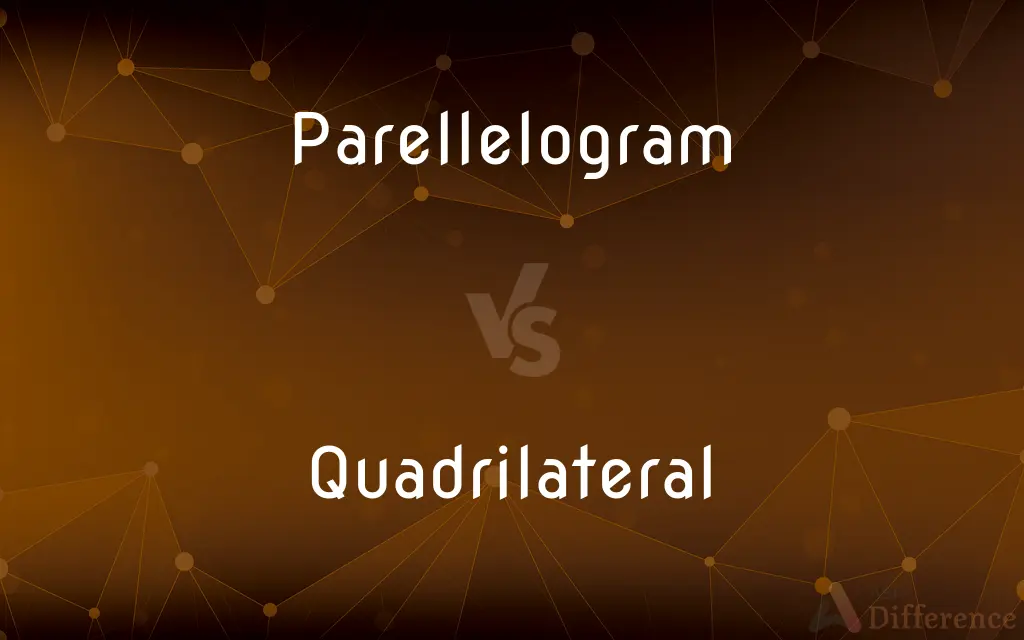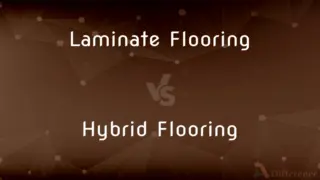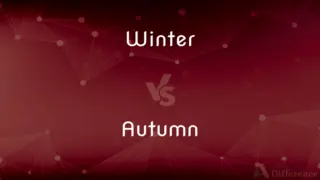Parellelogram vs. Quadrilateral — What's the Difference?
By Tayyaba Rehman & Fiza Rafique — Published on March 4, 2024
A parallelogram is a specific type of quadrilateral with opposite sides parallel and equal in length, while a quadrilateral is any four-sided polygon, including rectangles, squares, and trapezoids.

Difference Between Parellelogram and Quadrilateral
Table of Contents
ADVERTISEMENT
Key Differences
A parallelogram is characterized by having both pairs of opposite sides parallel and equal in length, and its opposite angles are also equal. This definition makes it a specific subgroup within the broader category of quadrilaterals.
Quadrilaterals, on the other hand, are simply four-sided polygons that can take various forms, including squares, rectangles, trapezoids, and rhombuses, besides parllelograms. The key distinction lies in the properties of their sides, angles, and symmetry.
Every parallelogram is a quadrilateral, but not every quadrilateral is a parallelogram. This is because the defining characteristics of parallelograms (parallel opposite sides, equal opposite sides, and angles) are not requirements for a shape to be classified as a quadrilateral. Quadrilaterals need only have four sides to fit their classification, without any specific requirements regarding the properties of those sides or the angles formed.
Parallelograms exhibit properties like bisecting diagonals, equal opposite angles, and the fact that each diagonal divides the shape into two congruent triangles, which are not necessarily characteristics of all quadrilaterals. For example, a rectangle is a parallelogram because it meets the criteria of having parallel and equal opposite sides, but a trapezoid, which has only one pair of parallel sides, does not meet the criteria to be considered a parallelogram.
The concepts of parallelograms and quadrilaterals also differ in their application in geometry and mathematics. While the study of quadrilaterals is about understanding the properties and classifications of four-sided figures in general, the study of parallelograms delves into more specific properties related to parallelism and symmetry in geometry. This distinction is crucial for solving problems and proving theorems in the field.
ADVERTISEMENT
Comparison Chart
Definition
A four-sided figure with opposite sides parallel and equal
Any four-sided polygon
Opposite Sides
Parallel and equal
May or may not be parallel or equal
Angles
Opposite angles are equal
Angles can vary widely
Diagonals
Bisect each other
May or may not bisect each other
Examples
Rectangle, Rhombus, Square
Rectangle, Rhombus, Square, Trapezoid
Compare with Definitions
Parellelogram
Includes rectangles and rhombuses.
A square is a special type of parallelogram with all sides equal.
Quadrilateral
Any polygon with four sides.
The quadrilateral had one set of parallel sides, classifying it as a trapezoid.
Parellelogram
Used in geometry to demonstrate properties of parallel lines.
The parallelogram law relates to vector addition.
Quadrilateral
Can have various shapes and sizes.
Quadrilaterals in the diagram included squares and rectangles.
Parellelogram
Has diagonals that bisect each other.
In every parallelogram, the diagonals create equal halves.
Quadrilateral
The simplest form of polygon after triangles.
Children learn to draw quadrilaterals before more complex shapes.
Parellelogram
Opposite angles are equal.
The parallelogram's opposite angles measured the same.
Quadrilateral
Basis for many geometrical concepts.
The properties of quadrilaterals are foundational in plane geometry.
Parellelogram
A quadrilateral with opposite sides parallel and equal.
The area of the parallelogram was calculated using base and height.
Quadrilateral
Sides and angles can vary.
Each quadrilateral on the test had unique side lengths and angles.
Quadrilateral
A polygon having four sides.
Quadrilateral
A polygon with four sides.
Quadrilateral
An area defended by four fortresses supporting each other.
The Venetian quadrilateral comprised Mantua, Peschiera, Verona, and Legnano.
Quadrilateral
Having four sides, and consequently four angles; quadrangular.
Quadrilateral
An area defended by four fortresses supporting each other; as, the Venetian quadrilateral, comprising Mantua, Peschiera, Verona, and Legnano.
Common Curiosities
What is the difference between a parallelogram and a quadrilateral?
A parallelogram is a type of quadrilateral with opposite sides parallel and equal, while a quadrilateral is any four-sided figure.
How do you calculate the area of a parallelogram?
The area of a parallelogram is calculated by multiplying the base by the perpendicular height.
What makes a quadrilateral a parallelogram?
A quadrilateral becomes a parallelogram when both pairs of its opposite sides are parallel and equal in length.
What is an example of a quadrilateral that is not a parallelogram?
A trapezoid, which has only one pair of parallel sides, is a quadrilateral that is not a parallelogram.
Why are squares considered parallelograms?
Squares meet the criteria of having opposite sides that are parallel and equal, making them a subtype of parallelograms.
Is a rhombus a parallelogram?
Yes, a rhombus is a parallelogram with all sides of equal length.
Can a square be considered a parallelogram?
Yes, a square is a special type of parallelogram where all sides are equal and angles are 90 degrees.
Do all parallelograms have right angles?
Not all parallelograms have right angles; rectangles and squares do, but rhombuses and generic parallelograms may not.
What is the significance of the diagonals in a parallelogram?
The diagonals in a parallelogram bisect each other, which is a property used in various geometric proofs and applications.
Are the diagonals of all quadrilaterals bisected?
Not all quadrilaterals have bisected diagonals; this property is specific to parallelograms and certain other quadrilaterals.
Are all parallelograms symmetrical?
Parallelograms are symmetrical about at least one axis, typically the axis that bisects the diagonals.
Can a parallelogram have curved sides?
No, by definition, a parallelogram must have straight sides.
How does the concept of parallelograms apply in real life?
Parallelograms are used in engineering and architecture to design structures and mechanisms that require specific angles and parallel lines for stability and function.
What distinguishes a rectangle from a parallelogram?
A rectangle is a parallelogram with the additional property that all its angles are right angles.
How do the properties of quadrilaterals vary?
Properties of quadrilaterals vary widely, depending on their specific shapes and angles, ranging from the simple rectangle to the more complex kite or trapezoid.
Share Your Discovery

Previous Comparison
Laminate Flooring vs. Hybrid Flooring
Next Comparison
Winter vs. AutumnAuthor Spotlight
Written by
Tayyaba RehmanTayyaba Rehman is a distinguished writer, currently serving as a primary contributor to askdifference.com. As a researcher in semantics and etymology, Tayyaba's passion for the complexity of languages and their distinctions has found a perfect home on the platform. Tayyaba delves into the intricacies of language, distinguishing between commonly confused words and phrases, thereby providing clarity for readers worldwide.
Co-written by
Fiza RafiqueFiza Rafique is a skilled content writer at AskDifference.com, where she meticulously refines and enhances written pieces. Drawing from her vast editorial expertise, Fiza ensures clarity, accuracy, and precision in every article. Passionate about language, she continually seeks to elevate the quality of content for readers worldwide.













































